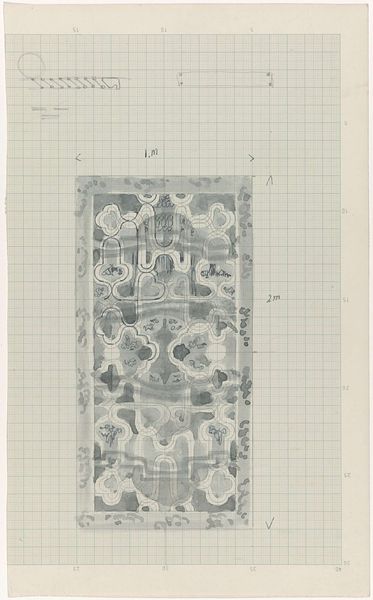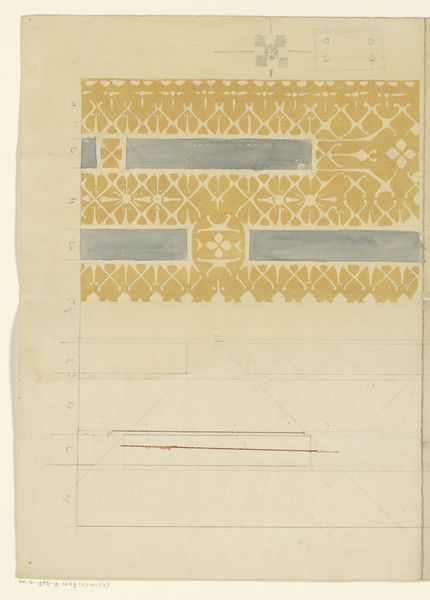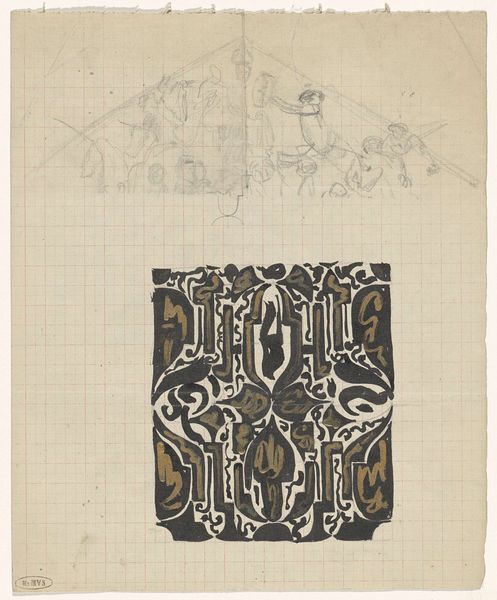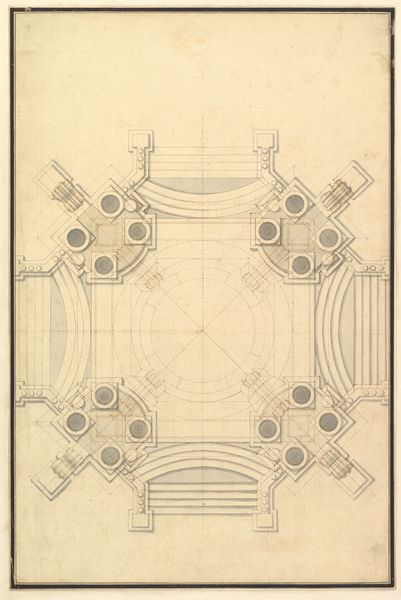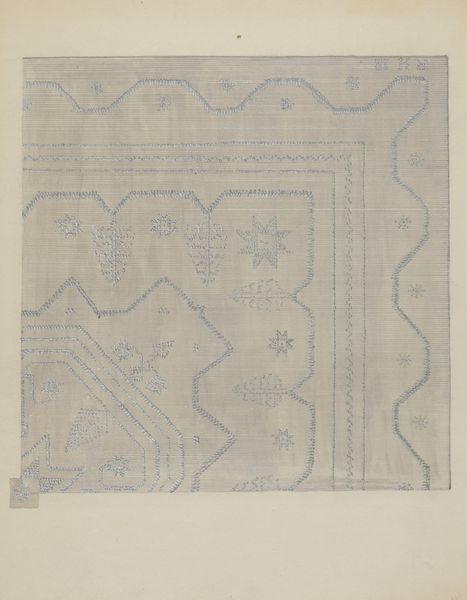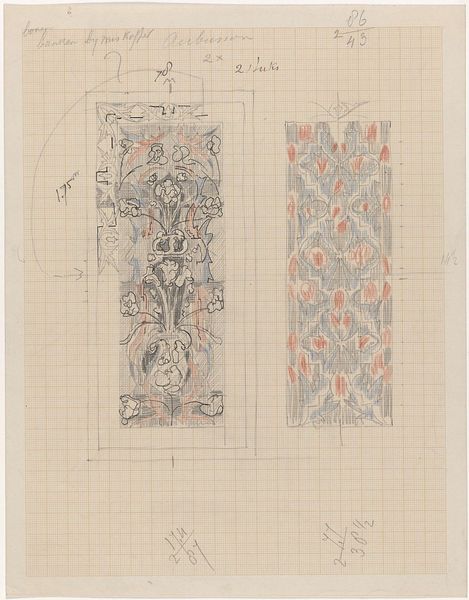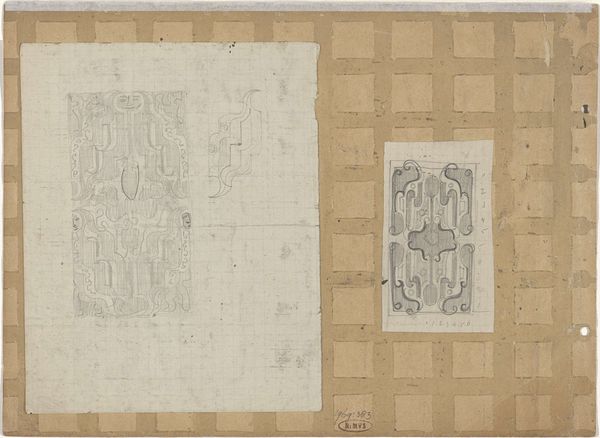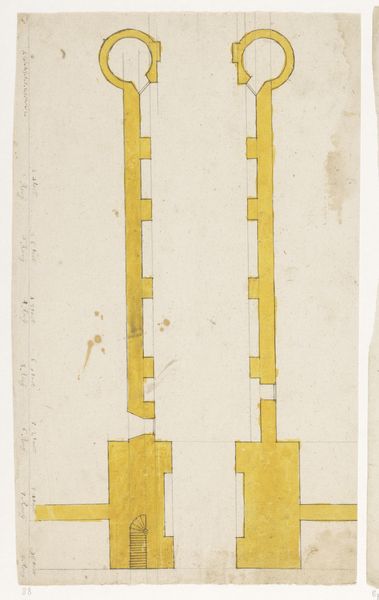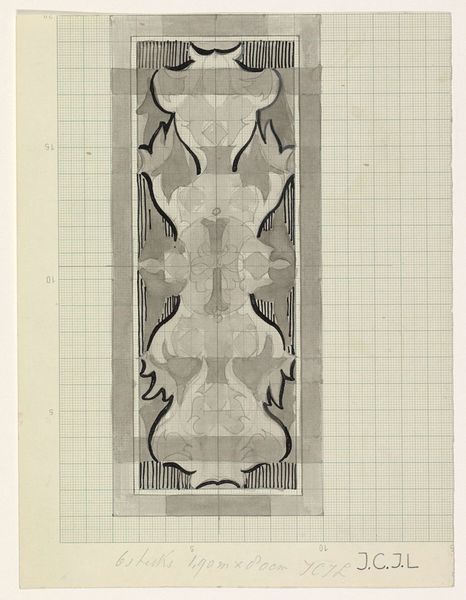
Ontwerp voor een opdrachtblad voor een album voor Prof. Mr. L. den Hartog 1902
0:00
0:00
drawing, coloured-pencil, paper, ink
#
drawing
#
art-nouveau
#
coloured-pencil
#
paper
#
ink
#
coloured pencil
#
geometric
Dimensions: height 391 mm, width 289 mm
Copyright: Rijks Museum: Open Domain
Curator: This is Reinier Willem Petrus de Vries' "Ontwerp voor een opdrachtblad voor een album voor Prof. Mr. L. den Hartog" from 1902, created with ink, coloured pencil, and paper. It’s certainly intriguing. Editor: It is! The use of graph paper is something you wouldn’t usually associate with an art nouveau piece made with such tactile media like ink and colored pencil. How does it change our perception of the piece, seeing these contrasting material aspects side-by-side? Curator: Exactly. The underlying grid reveals the labor involved, doesn’t it? It speaks to the means of production, the drafting and planning that go into even the most seemingly organic Art Nouveau designs. The meticulous layout, made visible by the grid, exposes art’s connection to labor and craft. Consider also the stylized symmetry -- does it remind you of anything? Editor: Now that you mention it, the scales held by symmetrical beasts makes me think about symbols of justice and heraldry in graphic design of that era. The planned design laid out over it creates almost a contradictory feel to me. Curator: The combination is important. Think of this commission not as purely aesthetic, but also practical, serving a specific social function for this professor's album. What do you think of how De Vries challenges traditional hierarchies of art by using functional materials in an aesthetic format? Editor: It really brings the whole process to light, breaking down this preconceived notion I had of purely inspired, unburdened artistic expression. Curator: Precisely. Seeing the bones of the work laid bare reframes how we understand the end result of this art and the cultural significance it could carry. Editor: I’ll definitely keep the materiality in mind going forward. Thanks! Curator: Absolutely. It is a lens through which we may better explore art’s broader relation to society.
Comments
No comments
Be the first to comment and join the conversation on the ultimate creative platform.
